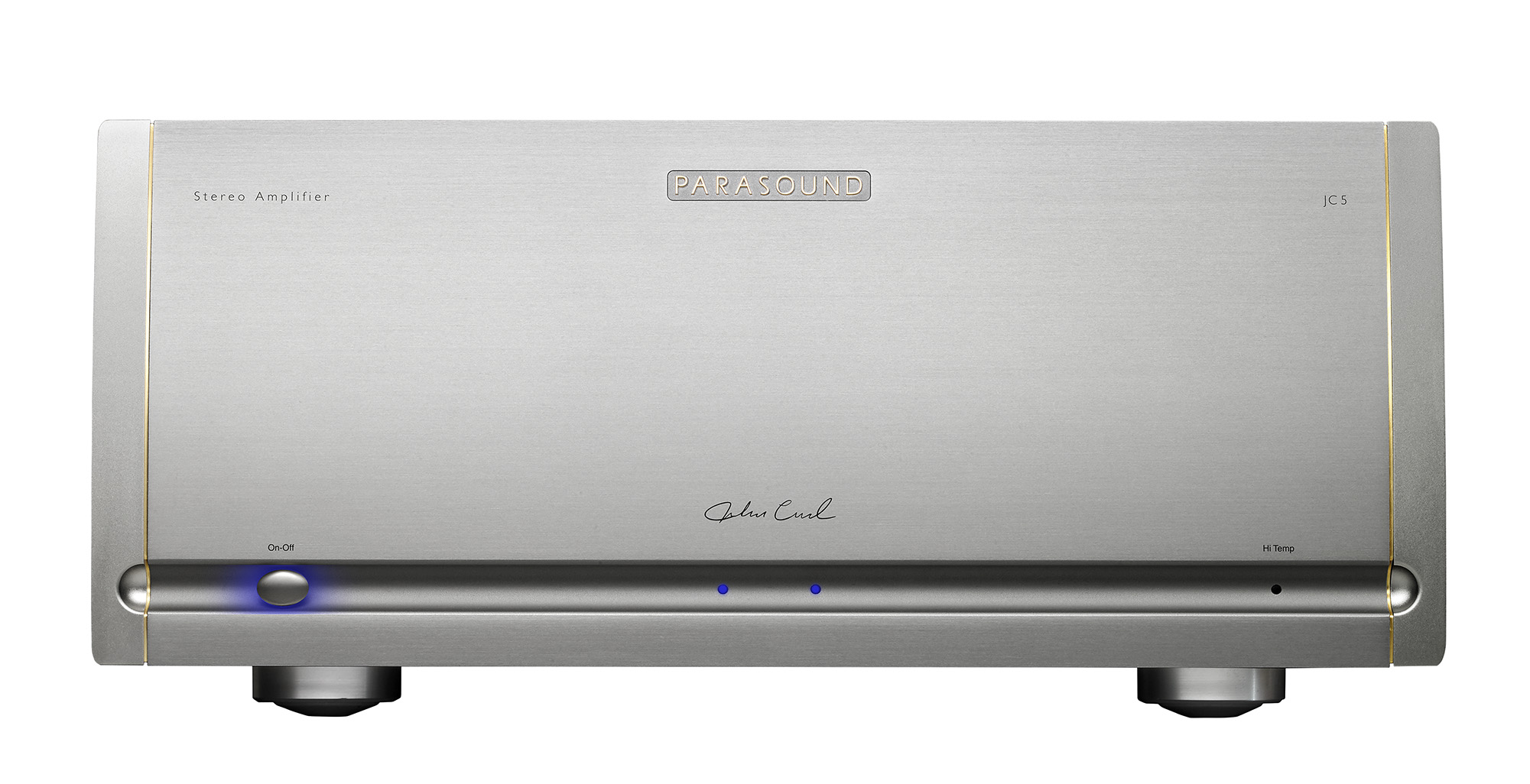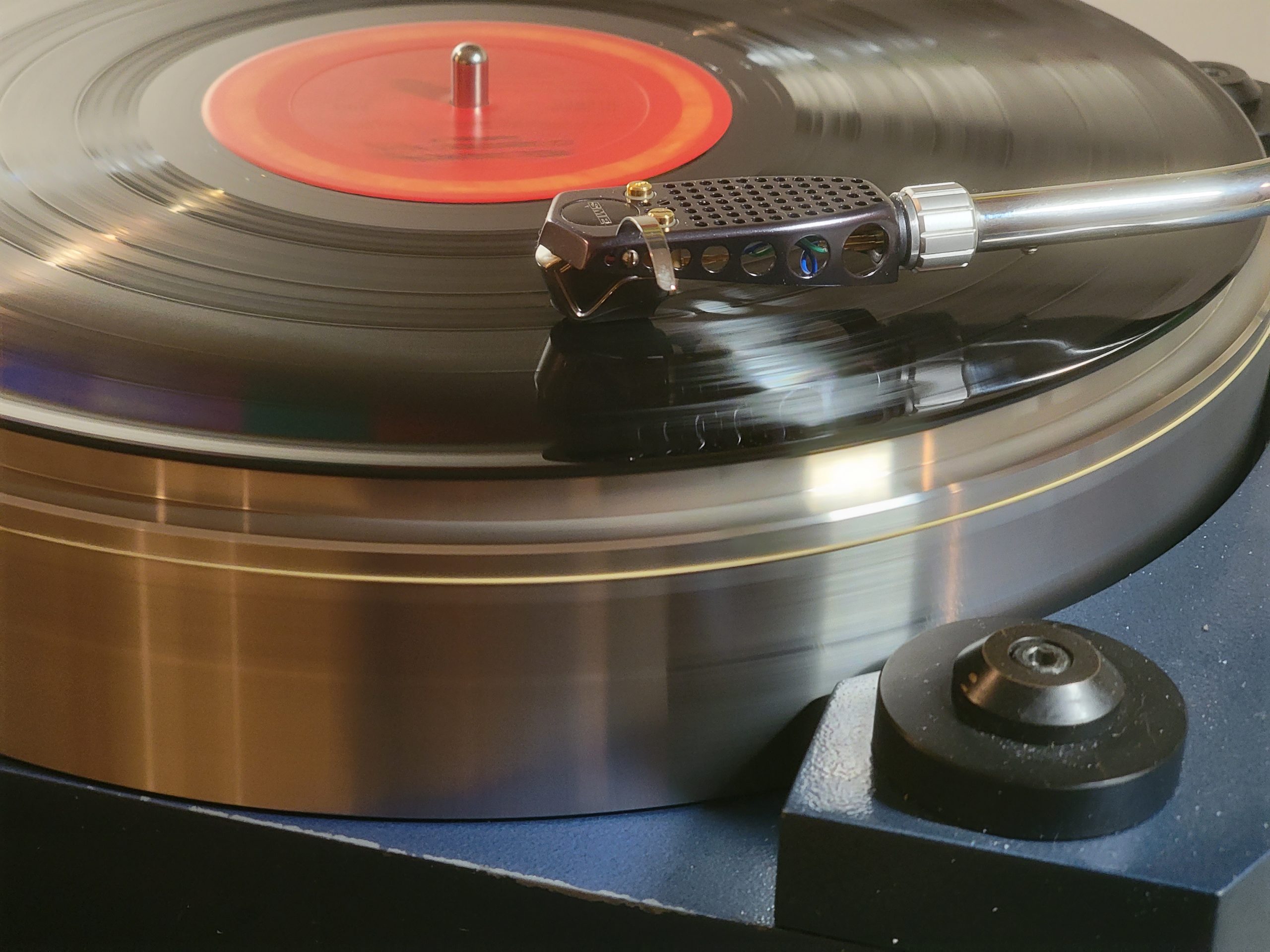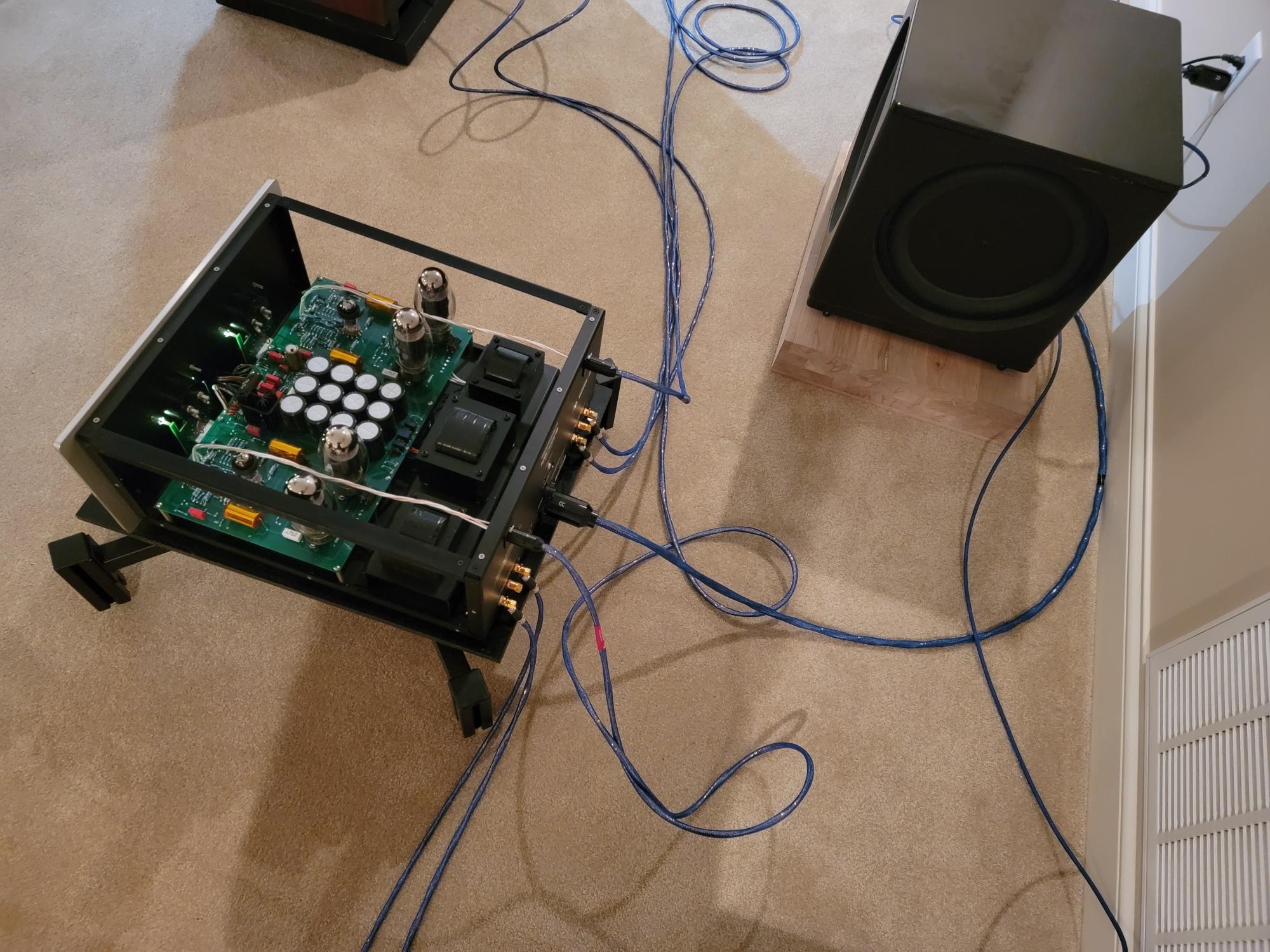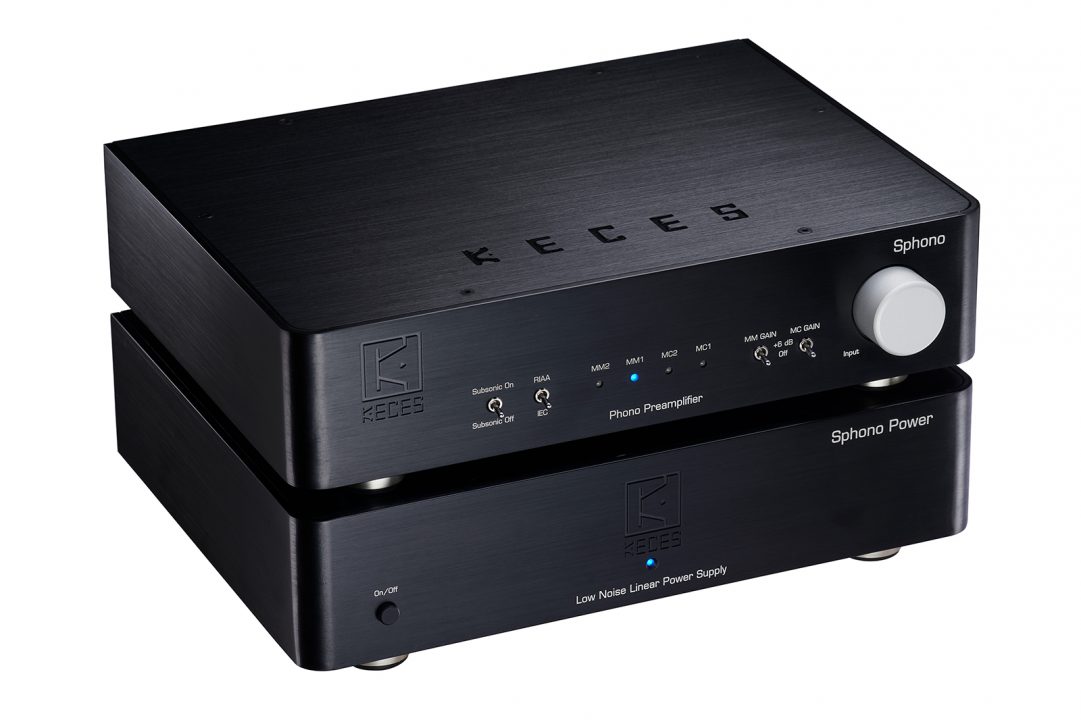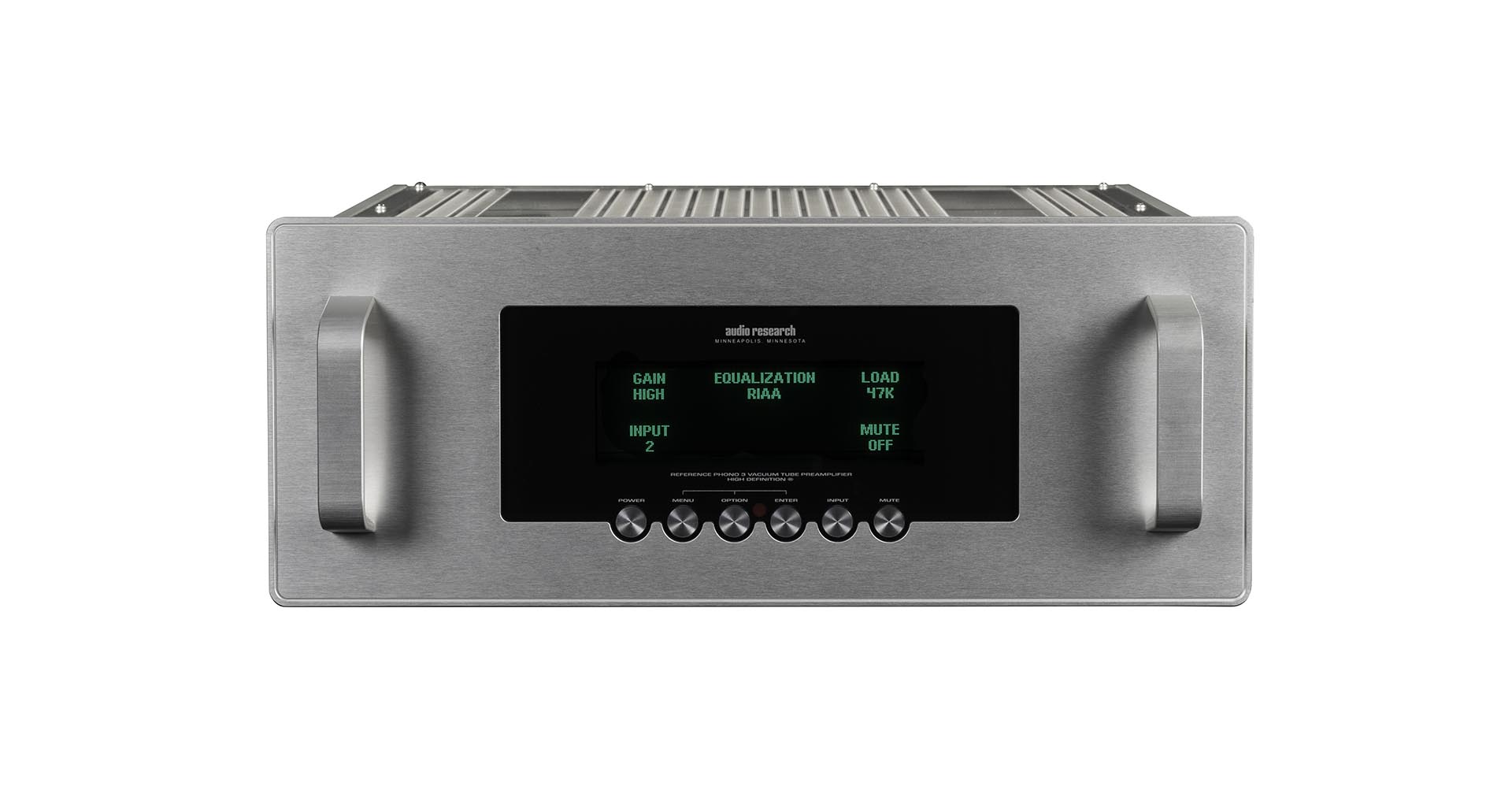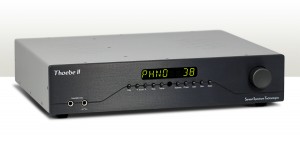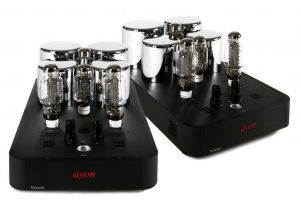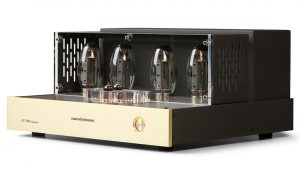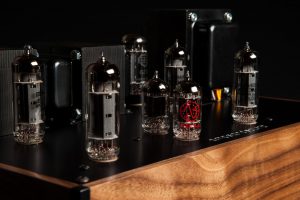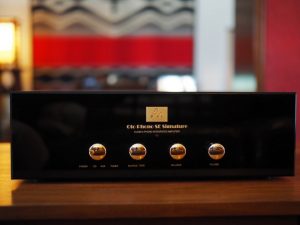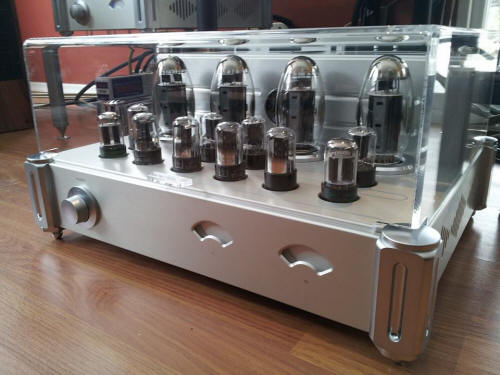
As I was contemplating where to start this review of the Raven Audio Shadow Reference Stereo amp, the words 'natural ease' popped into my head. Why? Because there is a natural ease about this amplifier that is simply captivating.
I want to frame this review by outlining my reference system that I dropped the Shadow Reference amplifier into. Sources are my Technics SP-10 MKII table mounted in a custom plinth with an SME 312S arm and Dynavector XV-1S cartridge. The phono section is the Krell KPE Reference with outboard power supply. My other sources include an Otari MX-55 2 track reel to reel playing through a pair of Ampex 350 repros. And last but not least, my remaining source is a laptop music server where I mainly play DSD files through JRiver software feeding a Mytek Stereo 192 DAC using the balanced outputs.
The preamp used for this review is my ARC Ref 5SE and the speakers are my Nola KOs. My speaker cables are the Viero Equilbrio Level 3 which I previously raved about in another review which you can see here. After I reviewed the Viero Equilbrio Level 3 speaker cables, I purchased a 3 meter pair of them because I could not bear to have them missing from my system. My reference amplifier is the ARC Ref 75. Oh, and I almost forgot to mention my pair of Definitive Technology Reference subs.
Like other amplifiers in the Raven Audio line, you are given a choice of output tubes to choose from including NOS Tung-Sol 6550 tubes at a premium upcharge (not the Russian made Tung-Sol 6550s in current production). I opted for the KT-150 output tubes as I previously did when I reviewed the Raven Audio Silhouette Reference monoblocks (you can see my review here). Dave Thomson did send me two matched quads of real Tung-Sol 6550s to listen to in addition to the KT-150s when I reviewed the Silhouette Reference monoblocks. Even though this may be blasphemy to some, I preferred the KT-150 tubes to the Tung-Sol 6550 tubes. The KT-150 tubes just sound far more linear to me across the audio band with better dynamics and incredibly detailed bass. Yes, as I mentioned before in my review of the Silhouette Reference monoblocks, the original Tung-Sol 6550s have that 'creamy' midrange that so entrances some people. However, I don't find them to be linear across the audio band. Compared to the KT-150 tubes, they are weak in the bottom end and not as extended up top and lack the overall dynamic range that you get from the KT-150s (and the KT-120s to a lesser degree). I'm also currently running KT-150 tubes in my ARC Ref 75 as well because I do believe it is the best of the KT family that is currently available on the market.
I know this is a crazy comparison for a number of reasons, but the Shadow Reference amplifier reminds me of the Krell KSA-250 amp that I used to own. The KSA-250 always sounded like it was loafing along meaning that it never sounded like you were anywhere near the limit of its power envelope. There is a good reason why the KSA-250 sounded like it was never breaking a sweat which made the sound coming out sound so effortless. The KSA-250 was an incredibly powerful amplifier with a 4.3 kV power transformer that weighed 83 lbs which is more than some amps weigh including my ARC Ref 75 which weighs 47 lbs.
A big part of the reason the Shadow Reference amp sells for $6995 is its massive chassis. The chassis parts are machined from solid blocks of billet aluminum. For those of you who appreciate precision machining and precision sheet metal work, you will appreciate the quality of the metal work in the Raven Shadow. The machining is done to the same high standards as I found in the Raven Audio Silhouette Reference monoblock amps. However, I still have to pick a nit here as I did in my review of the Silhouette Reference amps. Because there are so many tubes used in the Raven amplifiers (14 alone for the Shadow Reference), I strongly feel that Raven Audio should be either silk screening or engraving the tube sockets so there is no question on the part of the user where to plug the tubes in. I mentioned this in my review of the Silhouette Reference amps and my feelings haven't changed. All of the tubes come marked for which socket they are supposed to go into, but you have to rely on a drawing which shows the socket numbers. It would be much easier for the owners of Raven amps to have the sockets marked from V1 through Vxx. I realize that you can never make anything idiot proof because as a wise man once told me, idiots keep evolving. However, it sure would make things easier to have the tube sockets marked.
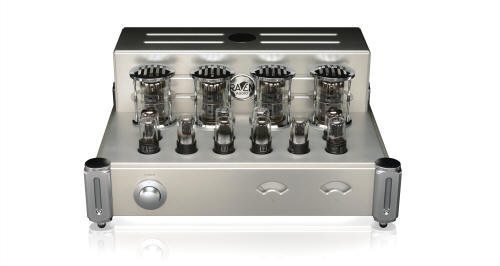
And while I'm picking nits, I am not a big fan of the little meters on the front of this amp. Yeah, they are kind of cute and they are backlit in a soft blue light, but you can't see these meters from your listening chair unless you have a pair of binoculars. Maybe Raven could shave off a few dollars from the price tag if they made the meters optional or just did away from them. The only thing they are good for is to reassure you that the amp is loafing with your speakers-or at least it is loafing with my speakers just like the Ref 75 meters tell me it's loafing as well.
The Shadow Reference has the same adjustable feet as the Silhouette Reference monoblocks do which I like. The have metal fluted flanges on each leg that you turn in order to perfectly level the amplifier which is a nice touch.
The Raven Audio tube amplifiers use a much different tube lineup (and more of them) than the typical tube amplifiers currently in production. Many tube amps use either two or four small signal tubes on the input with one tube being the phase inverter and the other tube being the driver for the output stage. And yes, some tube amps have tube rectifiers, but you won't find them in any audio tube amplifier that has both high output power and really good bass. The Shadow Reference amp uses 10 tubes in addition to the 4 output tubes for a total of 14 tubes. The 10 tubes before the output stage are also not the typical tubes you will find in the input stages of tube amplifiers. These are all 12v tubes. There are four 12J5 tubes used in the first stage of amplification and phase inversion. There are two 12SN7 tubes used as drivers and two 12SN7 tubes used as cathode followers which are unusual in power amps. The last two tubes are also a pair of 12SN7 tubes used in the auto bias circuit. And yes, you don't have to worry about biasing the output tubes with this amp. You can plug in 6550s/KT-88s/KT-90s/KT-120s or KT-150s and sit back and relax.
Also unusual in a push-pull amp that uses the type of output tubes the Shadow Reference does is the use of twp interstage transformers. You normally only see an interstage transformer used in tube amplifiers that have output tubes that are extremely hard to drive like some directly heated triode output tubes which were originally designed for transmitters such as the 211 and 845 tubes or they are sometimes used as phase inverters. I asked Dave Thompson about the purpose of the interstage transformers and based on the wishes of SE Han who is the designer, there was not much word to be heard. SE Han is being purposefully cryptic as to how he uses the interstage transformers as he feels they are important to how he achieves the quality of sound he does from his designs.
The Shadow Reference is a point-to-point wired amplifier and it also uses custom wound capacitors which also impacts the final cost. Even though this amp has a total of 14 tubes and weighs 68 lbs, it is rated for 50 watts of output power. Don't be fooled by the 50 watt rating, this is a very powerful sounding amplifier when used with the KT-150 tubes as I inferred above.
The Shadow Reference has two sets of inputs with both RCA and XLR connections. I used the XLR connections for my review as my MIT cables that go from my preamp to power amp are balanced. The Shadow Reference is not a balanced circuit and the XLR connectors therefore primarily serve as a convenience. The binding posts are high quality and you have a choice between using 4 ohm and 8 ohm taps from the Hammond output transformers. One nice touch with the binding posts is the symmetrical layout with regards to the right and left channels. The right channel is labeled 8, 4, common and the left channel is common, 4, and 8. Why this is cool is that it keeps you from having one speaker cable's termination legs from crossing over each other when you attach them to the amp.
When I look back at my listening notes, I noticed that on several occasions that I wrote the words "gorgeous tonal colors" because indeed, the Shadow Reference has gorgeous tonal colors. Real instruments produce harmonics which gives music its shadings and tonal colors in addition to the fundamental tones they reproduce. The better your system gets in terms of resolution/accuracy/fidelity to the source, the more those tonal colors are captured and reproduced. I doubt the Shadow Reference amp would hold any system back in the category of capturing tonal colors and shadings.
The Shadow Reference's ability to throw a big soundstage should mainly be inhibited by the rest of your system, setup, and room. It throws a nice big soundstage in my room (15' W x 23' D x 9' H with an 'L' shape at the listening end which adds 4' to the left of my listening position). The soundstage has good height and depth as well, but this can't be divorced from the ability of your speakers to portray this information. Tubes have always done dimensionality of both singers and instruments to a degree that most solid state designs can't quite capture. The KT-150 tubes have in my opinion raised this to a whole new level as they almost generate three dimensional sonic holograms in your listening room and this holds true when they are used in the Shadow Reference. I would be remiss here if I didn't add that the soundstage thrown by the Shadow Reference is not quite as big as my reference amp, the ARC Ref 75. The Ref 75 has a slightly taller and wider soundstage compared to the Shadow Reference.
Listening to the Wes Montgomery Trio A Dynamic New Sound via DSD found me writing those words about tonal colors again, except this time I used "beautiful" in place of "gorgeous." The brushes on the snare drum sound so real you feel like you could almost count the individual wires that make up each brush. The guitar sounds like Wes Montgomery is sitting on a stool playing a hollow body electric guitar through a tube amp. And the real truth is, he was playing a hollow body guitar through a tube amp (Gibson L-5CES). The Hammond B-3 organ played by Melvin Rhyne sounds fabulous as well (actually my notes say "sumptuous").
I'm still sitting on the fence with regards to the QRP LP reissue of Duke Ellington Masterpieces. I do think that side 2 sounds better and less dated than side 1, but I need to spend more time with this LP before I form any definitive opinions. However, have no doubts that the Shadow Reference will allow you to hear the magic that was captured in this 1950 recording. The first cut on this LP is "Indigo Mood" and you can hear every breath the saxophone player takes. The dynamic range of the saxophone on this recording is really, really good and when you consider the fact that this is a 1950 recording, it's really incredible. We have to take into consideration that since this is a recording made in 1950, it was most probably recorded with gear that was manufactured in the 1940s. I will take this sound any day over the majority of 16/44.1 PCM recordings though.
Speaking of old recordings that the Shadow Reference will help knock your socks off with, try the QRP LP version of Ella Fitzgerald and Louis Armstrong Ella and Louis. The cut "They Can't Take That Away From Me" is a good representation of what to expect from this LP and the Shadow Reference. Ella's voice would melt butter. The inflection and vibrato on Armstrong's voice are incredibly real sounding, and I mean 'real' like he is standing in front of you singing. Ditto for the horn playing.
Chicago's first LP which was simply titled Chicago Transit Authority (Columbia GP 8/CS9809) is a great sounding recording with huge dynamics. This is a very live sounding and thus believable recording in terms of helping you suspend disbelief that you are listening to a recording and the Shadow Reference lets this come through. Every song on this LP is worth playing and listening to. If you haven't heard Chicago play "I'm a Man," then you haven't heard this song yet.
The Shadow Reference simply sounds great from bottom to top and top to bottom. I find the bass definition to be very good, the midrange is outstanding, and the upper octaves are superb. No instrument that I played back through the Shadow Reference had me thinking that it didn't sound 'right' as in the amp couldn't reproduce it correctly without adding distortion. How great all of the instruments sound is of course dependent on the quality of the recording, but when you feed the Raven high quality source material, it will be reproduced with a very high degree of fidelity across the audio band.
The last thing I really want to touch on with regards to the Shadow Reference is that it will let you hear deep down into your system/room noise floor. The better your system and room gets, the lower your noise floor becomes which also increases your overall dynamic range. But make no mistake; every room, every system, and every component does have a noise floor. The Shadow Reference has a very low noise floor. I will tell you that the 12v tubes used in the Raven amps have a tendency to make a 'tinkling' sound when first powered up and until they warm up, but overall this is a very quiet amp. I doubt in the context of the systems the Shadow Reference will be used in that it alone will set the noise floor of the system. Again, you can hear very deep into the noise floor as the sounds of voices and instruments trail off as they decay into silence.
Yes, the Shadow Reference is a 50 watt tube amp that sells for $6,995.00. While I understand that you can buy cheaper amplifiers that put out much more power, I don't think you can buy an amplifier for substantially less that puts out this quality of sound and is built anywhere near this solid. Billet aluminum is expensive and so is machining costs. This is not an amplifier made from flimsy sheet metal that bends if you look at it funny.
I feel much the same way when I reviewed the Silhouette Reference monoblock amps as I do after spending time with the Shadow Reference amp in that I'm pretty sure the sound of Raven Audio is the sound that many of us are chasing after. This is the sound that makes you want to melt back into your favorite listening chair and forget about the day's troubles as the music washes over you and soothes your soul (unless of course you are listening to speed metal death music). With the KT-150 tubes, the Shadow Reference is clean, transparent, dynamic, effortless, dimensional, and natural sounding when used with high quality source material. If you have speakers that can come to life with 50 great sounding watts, I highly recommend you listen to this amplifier. Mark Pearson
Raven Shadow Reference Stereo Amplifier
Retail: $6995
Output: 50 watts per channel
Speaker terminals: 4 and 8 ohm
Dimensions: W 19.5" x D 13.5" x H 9.5"
Weight: 68 lbs
Raven Audio
www.ravenaudio.com




